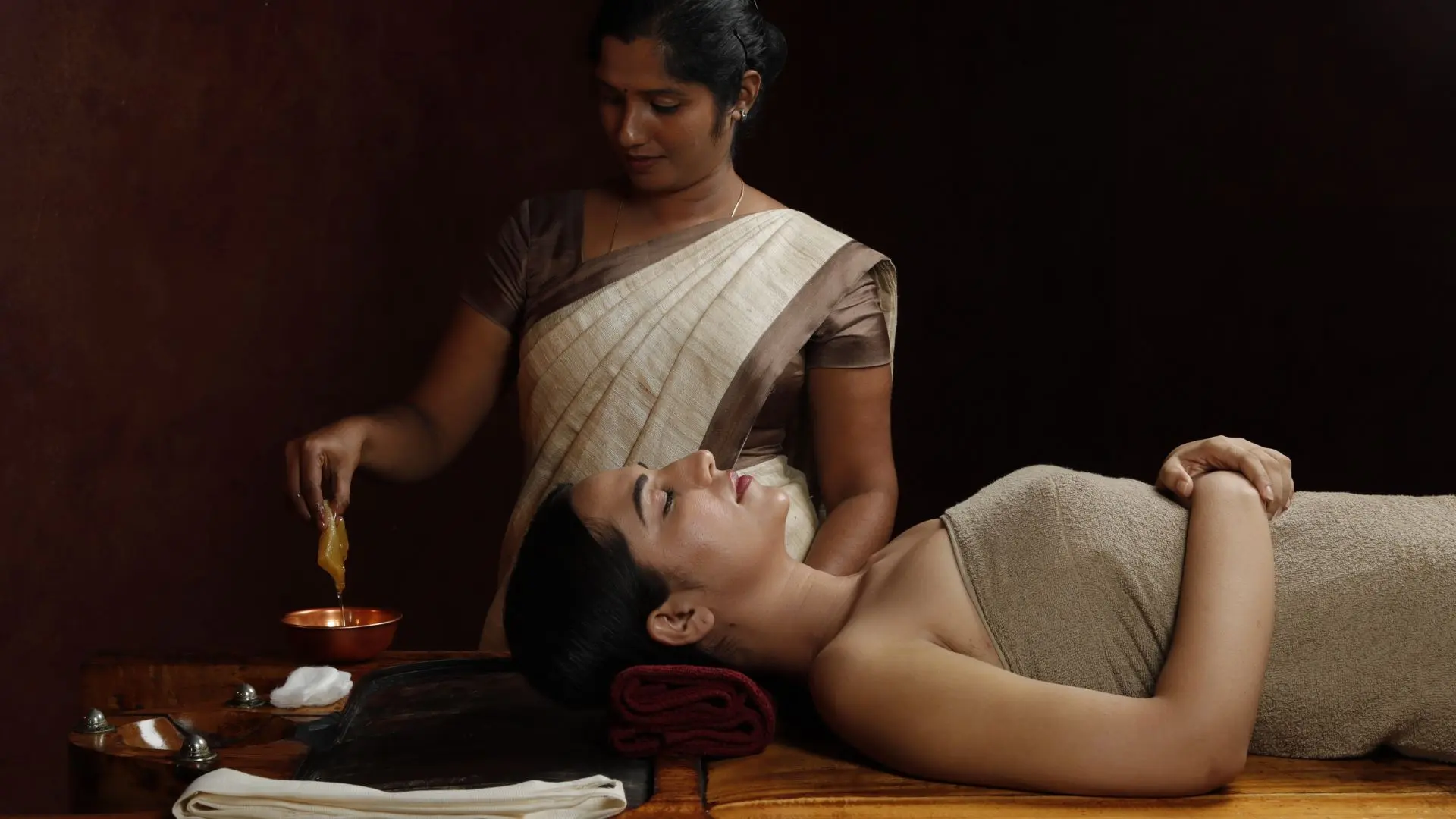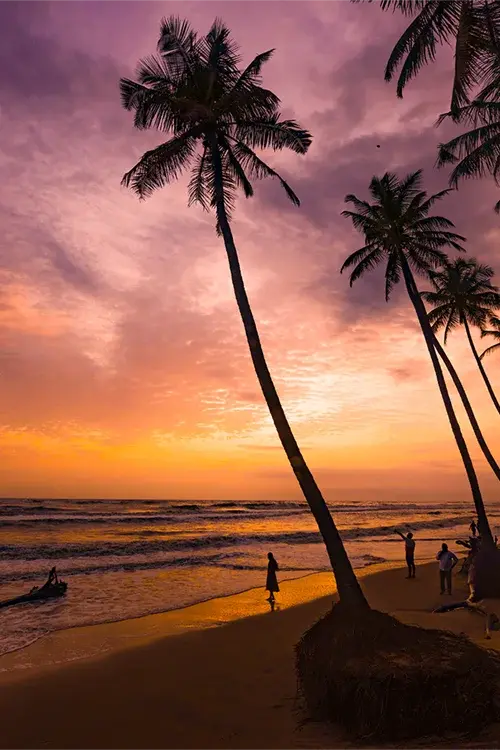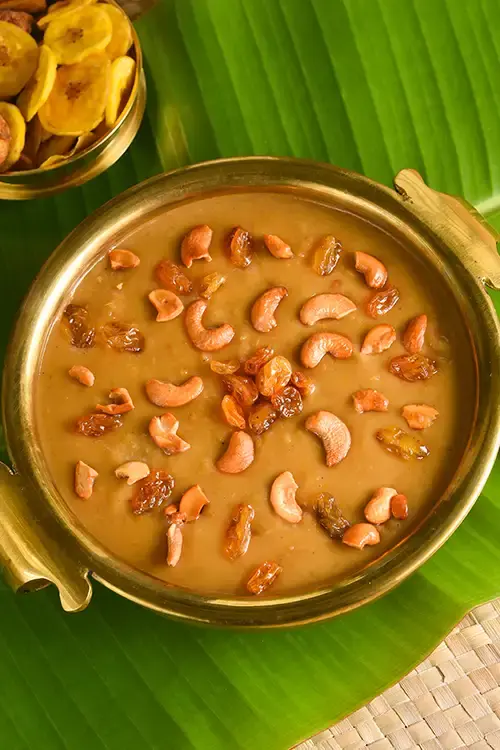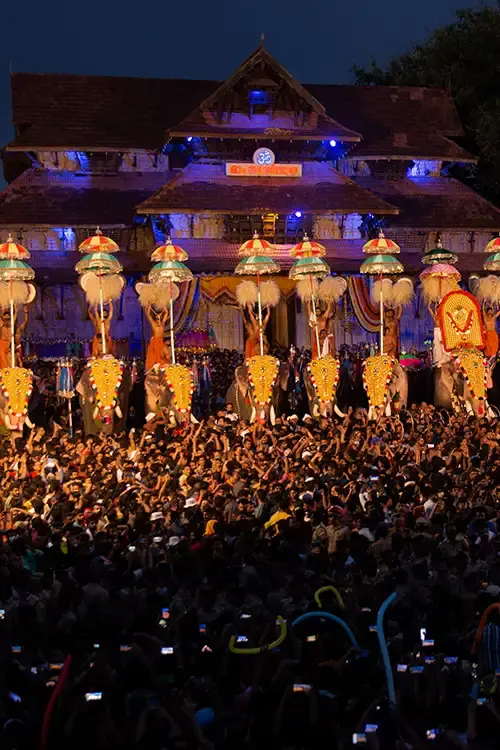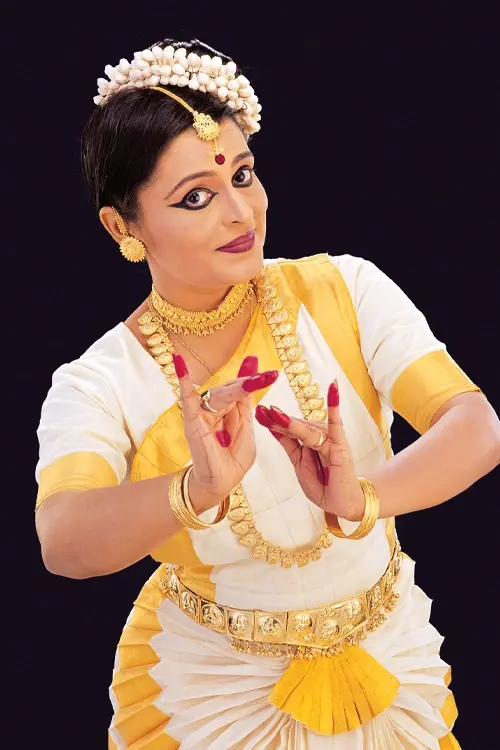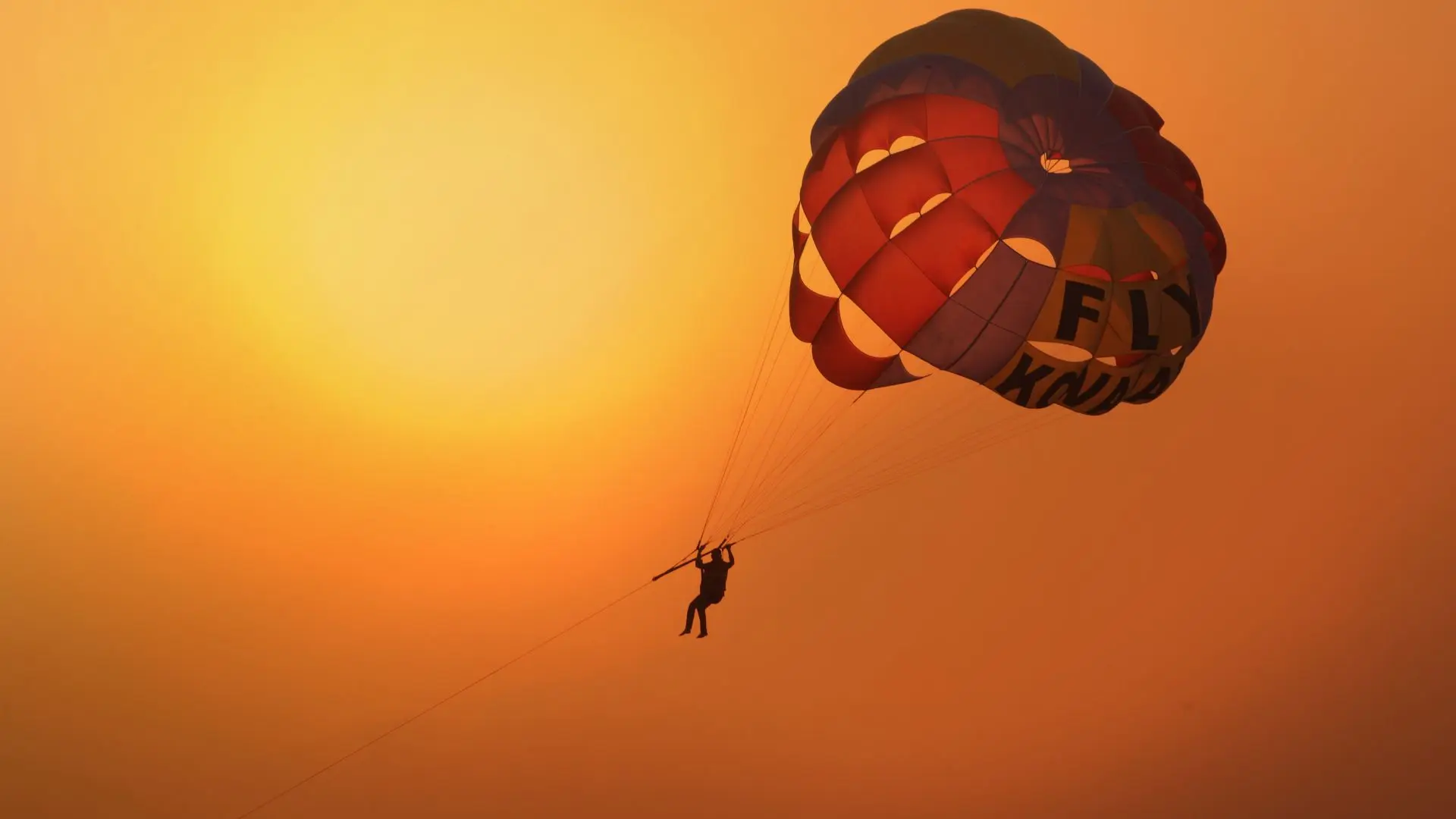FAQ
What is traditional Theyyam performance?
Theyyam, a vibrant ritual art form of Northern Kerala, is renowned for its magnificent costumes, elaborate facial makeup and striking use of colours. Accompanied by traditional musical instruments like drums, conches and the utukku, Theyyam performances are enhanced by songs called thottam. Costumes and makeup are defining features, with vivid colours such as red, orange, yellow, black and white playing significant roles. Body painting styles include Parunthuvaal ezhuthu and Anchupulli ezhuthu, while facial painting techniques like Praakezhuthu, Sankezhuthu, Naagam thathal ezhuthu and Varezhuthu add intricate detail. The headgear, known as mudi, is a distinctive element of the attire.
Believed to have over 400 variations, Theyyam performances pay homage to deities through song and ritual. The performer, called Kolam, undergoes a period of abstinence two weeks before the ritual to maintain spiritual purity. Also referred to as Thira, Thirayattam and Kaliyattam, Theyyam is performed by individuals from various communities, including Vannan, Malayan, Velan, Anjottan, Kopalan, Mavilan and Kolathari.
Derived from the Sanskrit word Daivam, meaning ‘God’ or ‘divine force,’ Theyyam embodies the connection between humans and the divine. These performances are held annually from December to April in the shrines of Malabar, particularly in Kannur and Kasaragod districts. Famous Theyyam performances take place in locations such as Karivallor, Nileswaram, Kurumathoor, Cherukunnu, Ezhom and Kunnathoorpadi, attracting devotees and art enthusiasts alike.
